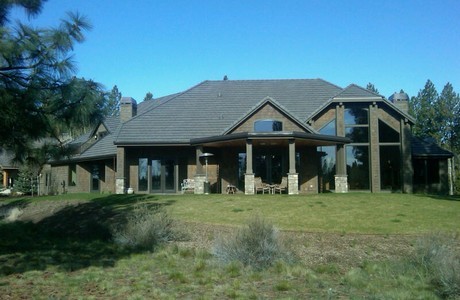Reference to the Chinese Downhill in a recent post nearly motivated me to write about Mt. Bachelor. Instead, in an effort to quell the angst (quell the angst?) caused by the Bend’s Price Drop Leads Nation post, I’ve gone with a positive report based on the latest survey by the National Association of Realtors®.
91 Markets See Year-Over-Year Price Gains
In the first quarter, 91 out of 152 metropolitan statistical areas showed higher median existing single-family home prices compared with prices in the first quarter of last year. Of those with higher prices, 29 had double-digit increases. Three of the 152 metro areas had no change in prices, and 58 metros had price declines.
In the fourth quarter of 2009, only 67 areas reported year-over-year gains, and in the third quarter only 30 metro areas had price increases.
Nationally, Median Price Down Slightly
The national median existing single-family price was fairly flat at $166,100 in the first quarter of 2010, down 0.7 percent from the first quarter 2009 price of $167,300. Distressed homes, which typically sell for 15 percent less than traditional homes, accounted for 36 percent of first-quarter sales.
“This flattening in home prices is something we’ve been seeing in all of the home price measures lately, and quite clearly in this metro area price report,” says Lawrence Yun, NAR chief economist. “The tax credit has been very effective in drawing down excess inventory, with about one million additional sales resulting directly from the stimulus.”
Sales Pace Up from Year-Ago
Total state existing-home sales, including single-family and condo, were at a seasonally adjusted annual rate of 5.14 million in the first quarter, down 14 percent from a surge of 5.97 million in the fourth quarter, which was driven by the initial tax credit.
However, when compared with the first quarter of 2009, sales were up 11.4 percent from 4.61 million. “Year-ago comparisons are more meaningful in this report due to sales swings from the tax credit,” Yun says.
Sales volume increased from a year ago in 44 states and the District of Columbia; 31 states and D.C. saw double-digit gains while two were unchanged and four were down.
NAR President Vicki Cox Golder says there’s been a change in market psychology. “Buyer confidence is back, and home buyers have long-term views. The typical buyer plans to stay in their home for 10 years, so we’ve put the flipping mentality behind us and most people see housing for what it is—shelter that provides social benefits and is also a good long-term investment.”
Favorable Rates Help
According to Freddie Mac, the national average commitment rate on a 30-year conventional fixed-rate mortgage was 5 percent in the first quarter, up slightly from a record low 4.9 percent in the fourth quarter; it was 5.1 percent in the first quarter of 2009.
Golder says that even with some recent easing of mortgage credit, separate surveys show the housing market continues to be constrained by mortgage issues. “One-third of NAR members report the most important factor limiting potential clients has been difficulty in obtaining a mortgage,” she said.
“In addition, 11 percent of REALTORS® in the first quarter report a contract was cancelled because an appraisal came in less than the price negotiated between a buyer and seller, and another 16 percent report a contract had to be renegotiated because of a low appraisal,” Golder says. “As a result, the housing recovery isn’t as strong as it could be.”
NAR leaders are discussing these and other concerns with an array of government and industry leaders at a real estate summit in Washington, D.C., this week. The three-day summit began Tuesday at the REALTORS® Midyear Legislative Meetings & Trade Expo.
More Details on Pricing Trends
In the condo sector, metro area condominium and cooperative prices showed the national median existing-condo price was essentially unchanged at $170,700 in the first quarter, down 0.1 percent from the first quarter of 2009. Twenty-four metros showed increases in the median condo price from a year earlier and 31 areas had declines; in the fourth quarter 11 metros were up, and only four metros experienced annual price gains in third quarter of 2009.
There were solid single-family price gains in a variety of metro areas. “We see double-digit price increases in the San Francisco Bay region, and in smaller metros in the Northeast,” Yun says. “Price gains in some Midwestern markets are not very meaningful because of comparisons to very high levels of distressed homes that were sold at huge discounts a year ago.”
Here’s a look at a price breakdown by region:
- Northeast. The median existing single-family home price in the Northeast rose 9.0 percent to $256,300 in the first quarter from the same quarter in 2009. Existing-home sales in the Northeast fell 17.7 percent in the first quarter to a level of 850,000 but are 19.7 percent higher than a year ago.
- Midwest. The median existing single-family home price slipped 0.8 percent to $130,600 in the first quarter from a year ago. Existing-home sales in the Midwest dropped 17.3 percent in the first quarter to a pace of 1.13 million but are 10.8 percent above the first quarter of 2009.
- South. In the South, the median existing single-family home price was $148,200 in the first quarter, up 1.1 percent from the first quarter of 2009. Existing-home sales in the South fell 14.6 percent in the first quarter to an annual rate of 1.89 million but are 10.7 percent higher than a year ago.
- West. The median existing single-family home price in the West was $210,200 in the fourth quarter, which is 8.3 percent below a year ago. Existing-home sales in the West declined 6.8 percent in the first quarter to an annual rate of 1.27 million but are 8.3 percent higher than the first quarter of 2009.
What Does This Report Mean to Us?
The conflicting messages of this report (as well as the incredibly small size of the font) and that of the FHFA report only serve to reinforce the opinion that nobody can really predict what is going to happen with the housing industry. It also becomes very clear that real estate is most definitely a very local commodity, that no one rule can apply to all areas.
Search anonymously for homes in Bend Oregon. For anyone who actually read the entire NAR report, please click here and register for a very special prize.





